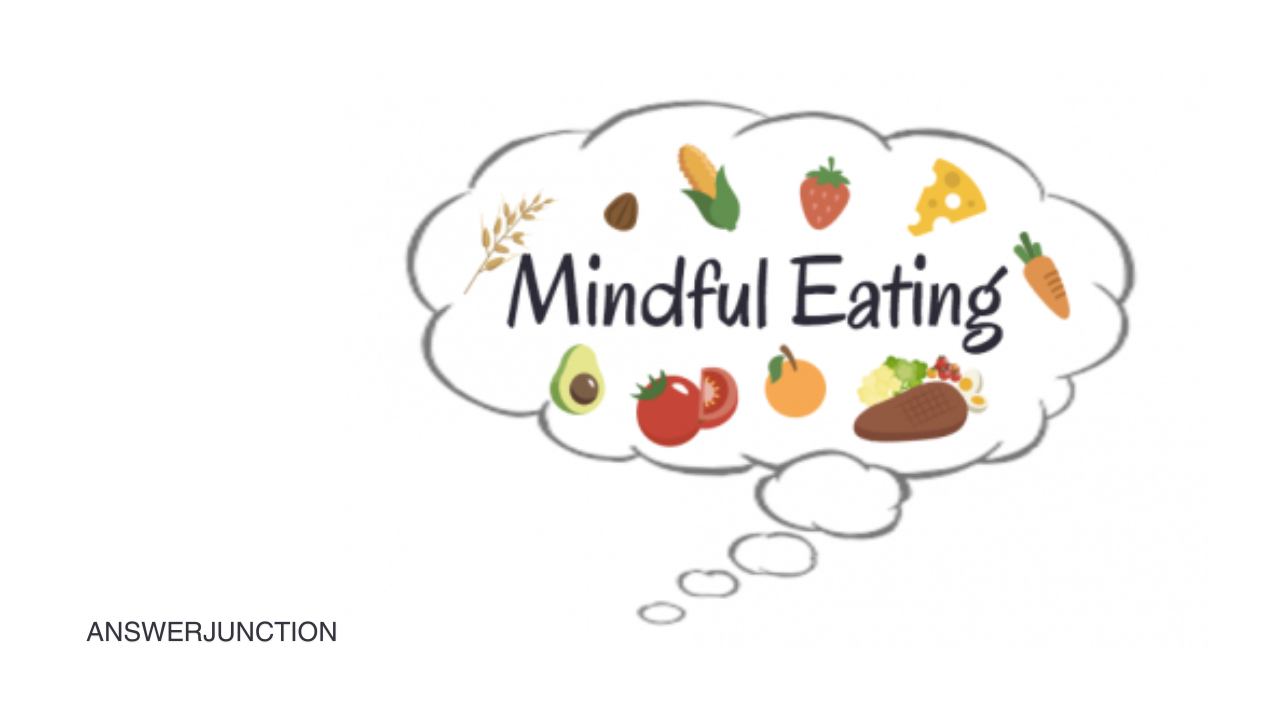In today’s fast-paced world, eating often becomes a hurried task, squeezed in between meetings, errands, and the myriad distractions that define modern life. This hurried approach can lead to overeating, poor digestion, and an unhealthy relationship with food. Mindful eating offers a refreshing alternative—an approach that encourages awareness, appreciation, and a deeper connection to the eating experience. In this article, we will explore the principles of mindful eating and provide practical strategies to help you nourish both your body and mind.
Understanding Mindful Eating
Mindful eating is rooted in the concept of mindfulness, which involves being fully present in the moment and aware of your thoughts, feelings, and bodily sensations without judgment. When applied to eating, this means paying attention to the sensory experience of food, including its taste, texture, aroma, and presentation.
Benefits of Mindful Eating
- Improved Digestion: Eating slowly and mindfully can enhance digestion by allowing your body to properly process food.
- Weight Management: Mindful eating can lead to better control over portion sizes, helping to prevent overeating.
- Enhanced Satisfaction: By savouring each bite, you may find greater enjoyment in your meals, which can lead to a more satisfying eating experience.
- Emotional Well-being: Mindful eating can help individuals develop a healthier relationship with food, reducing feelings of guilt and anxiety surrounding eating.
- Increased Awareness of Hunger Cues: Mindfulness can help you tune into your body’s hunger and fullness signals, leading to more intuitive eating habits.
Strategies for Mindful Eating
Incorporating mindful eating into your daily routine requires practice and intention. Here are some effective strategies to help you get started:
1. Create a Mindful Eating Environment
Your eating environment plays a significant role in your overall eating experience. To cultivate mindfulness, consider the following:
- Minimize Distractions: Turn off the television, put away your phone, and find a quiet space where you can focus on your meal.
- Set the Table: Take a moment to arrange your food on a plate and set the table nicely. This can help create a sense of occasion around your meal.
- Practice Gratitude: Before you start eating, take a moment to appreciate the food before you. Consider where it came from, the effort it took to prepare, and the nourishment it will provide.
Transform Your Morning Routine: Simple Tips for a Healthier Start
2. Slow Down and Savor Each Bite
One of the key principles of mindful eating is to slow down and truly savour each bite of food. Here’s how to do it:
- Chew Thoroughly: Take your time to chew your food completely. This not only aids digestion but also allows you to experience the flavours and textures more fully.
- Put Down Your Utensils: After taking a bite, put down your fork or spoon. This simple act can encourage you to pause and reflect on the taste and sensation of the food.
- Engage Your Senses: Pay attention to the colours, smells, and textures of your food. Engage all your senses to deepen your eating experience.
3. Listen to Your Body
Tuning into your body’s hunger and fullness cues is essential for mindful eating. Here are some tips:
- Hunger Check: Before eating, ask yourself how hungry you are on a scale of 1 to 10, with 1 being extremely hungry and 10 being overly full. This can help you gauge whether it’s the right time to eat.
- Fullness Awareness: As you eat, periodically assess how full you feel. Aim to stop eating when you reach about 70-80% fullness to prevent overeating.
- Check-In Emotionally: Notice if you are eating out of hunger or if you are driven by emotions such as stress, boredom, or sadness. This awareness can help you make healthier choices.
4. Practice Portion Control
Mindful eating can assist in developing a healthier relationship with portion sizes. Here’s how to manage portions mindfully:
- Use Smaller Plates: Serving food on smaller plates can create the illusion of a fuller plate, helping you feel satisfied with less food.
- Serve in the Kitchen: Instead of placing serving dishes on the table, serve portions in the kitchen. This reduces the temptation to go back for seconds.
- Be Mindful of Seconds: If you feel the urge for seconds, take a moment to assess your hunger level before going back for more. Often, waiting a few minutes can clarify your body’s true needs.
5. Focus on Nutritional Choices
Choosing nourishing foods is an essential aspect of mindful eating. Here are some strategies to enhance your food choices:
- Prioritize Whole Foods: Incorporate more whole, unprocessed foods into your diet. These foods are typically more nutrient-dense and can enhance your overall well-being.
- Experiment with New Flavors: Allow yourself to explore new foods and flavours. This can make your meals more exciting and satisfying.
- Balance Your Plate: Aim for a balanced plate that includes a variety of food groups—protein, healthy fats, and complex carbohydrates. This balance can help you feel fuller and more energized.
6. Incorporate Mindful Snacking
Snacking can often lead to mindless eating, but it can be transformed into a mindful practice with these tips:
- Prepare Healthy Snacks: Keep nutritious snacks on hand, such as fruits, nuts, or yoghurt, to avoid reaching for processed options.
- Snack with Intention: When snacking, sit down and focus on the experience, much like you would with a meal. Pay attention to the taste, texture, and aroma of your snack.
- Limit Multi-tasking: Avoid eating snacks while engaging in other activities, such as watching TV or working. This can help you fully enjoy and appreciate your snack.
Life Hacks for Everyday Efficiency: Simple Tips to Simplify Your Life
7. Reflect on Your Eating Experience
After each meal or snack, take a moment to reflect on your eating experience. Consider the following questions:
- How did the food taste?: Think about the flavours, textures, and overall satisfaction of the meal.
- How did your body feel?: Notice how your body responds after eating. Are you energized, satisfied, or still hungry?
- What emotions did you experience?: Reflect on any emotions that arose during the meal. Were you relaxed, anxious, or distracted?
This reflection can help you become more attuned to your eating habits and guide you toward healthier choices in the future.
8. Practice Mindfulness Beyond Eating
Mindful eating is just one aspect of a mindful lifestyle. Here are some practices to incorporate mindfulness into other areas of your life:
- Mindful Breathing: Take a few minutes each day to focus on your breath. Inhale deeply and exhale slowly, allowing your mind to settle.
- Meditation: Consider incorporating a regular meditation practice into your routine. This can enhance your overall mindfulness and help you become more present during meals.
- Gratitude Journaling: Spend a few moments each day writing down things you are grateful for. This practice can shift your mindset and foster a positive relationship with food and life.

Mindful eating is a powerful practice that can transform your relationship with food, enhance your overall well-being, and promote a healthier lifestyle. By incorporating these strategies into your daily routine, you can cultivate awareness, appreciation, and joy in the act of eating. Remember, the journey toward mindful eating is personal and unique; take it one step at a time, and be gentle with yourself as you develop this enriching practice. Nourishing your body and mind through mindful eating is not just about what you eat but how you eat, allowing you to live a more balanced and fulfilling life.
Gardening 101: Essential Tips for Beginners to Grow a Thriving Garden




